
Vol.13
Guided By The Land: Balancing Openness and Seclusion
Bjarke Ingels (BIG)
The visionary behind NOT A HOTEL SETOUCHI is Bjarke Ingels, Founder and Creative Director of BIG (Bjarke Ingels Group). The forward-looking architectural firm is celebrated globally for its unique design methodologies and engineering innovations, as well as its cross-industry collaborations that aim to tackle sustainability and address societal challenges. By transcending the boundaries of architecture, Bjarke and his team strive to create a better world through design and innovation. We visited him at BIG’s Copenhagen office to discover more about his approach.
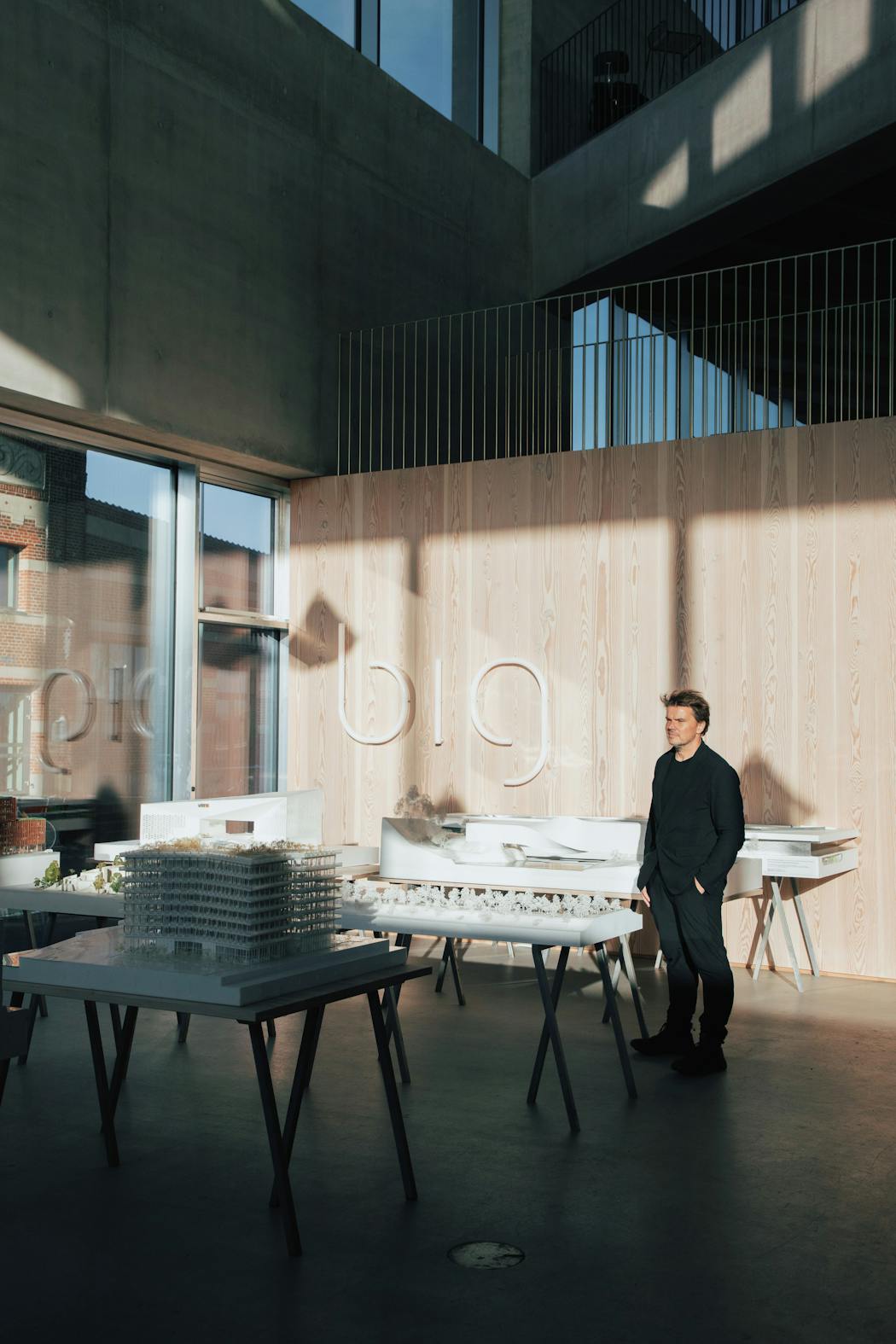
An Inquiry Form Message Sparks a BIG Collaboration
The NOT A HOTEL SETOUCHI project sparked to life in the summer of 2022 when a member of the NOT A HOTEL (NAH) team clicked open an inquiry from Denmark in the company inbox. The team at BIG was intrigued by the projects gaining traction in Japan and wanted to learn more. "We saw several NAH projects and wondered who was behind them. Their work differs from that of standard hotels; there's a sprinkling of adventure and a resolute commitment to quality. NOT A HOTEL is, in a sense, attempting to redefine hospitality, introducing a modern and diverse alternative that challenges conventional norms, including traditional values and star rating criteria. Recognizing the significance that architecture and design could play in realizing NAH’s vision for a novel form of hospitality, we were inspired to reach out and propose a collaboration.”

Sagishima is a remote island in the Seto Inland Sea, a 13-minute speed-vessel journey from the port of Mihara in Hiroshima. This secluded island spans approximately 12 km in circumference, thrives with vegetable and citrus cultivation, and is home to around 600 residents. Bjarke offers his perspective on the location. “The island chain within the Seto Inland Sea conjures the spirit of a traditional Japanese landscape painting. You have these silhouettes of undulating islands packed with lush greenery emerging from the sea; it's all very dramatic. The Sagishima site where we will construct NOT A HOTEL SETOUCHI epitomizes a microcosm of the Setouchi landscape. Its rugged and intricate topography establishes a harmonious interplay between the panoramic view in the distance and the intricate details of the landscape right before your eyes.”

We Are Not Here to Impose Our Ideas on the Site We Explore, Observe, and Understand
The team explored the expansive 30,000-square-meter site at the tip of the island's southwestern region, strategically determining the suitable locations for the villas. They then returned to the studio to craft a design that seamlessly aligned with the existing road and topography to minimize interference with the natural landscape. The outcome is an array of buildings arranged across the site in angular motifs: "360," "270," "180," "90," and "0."
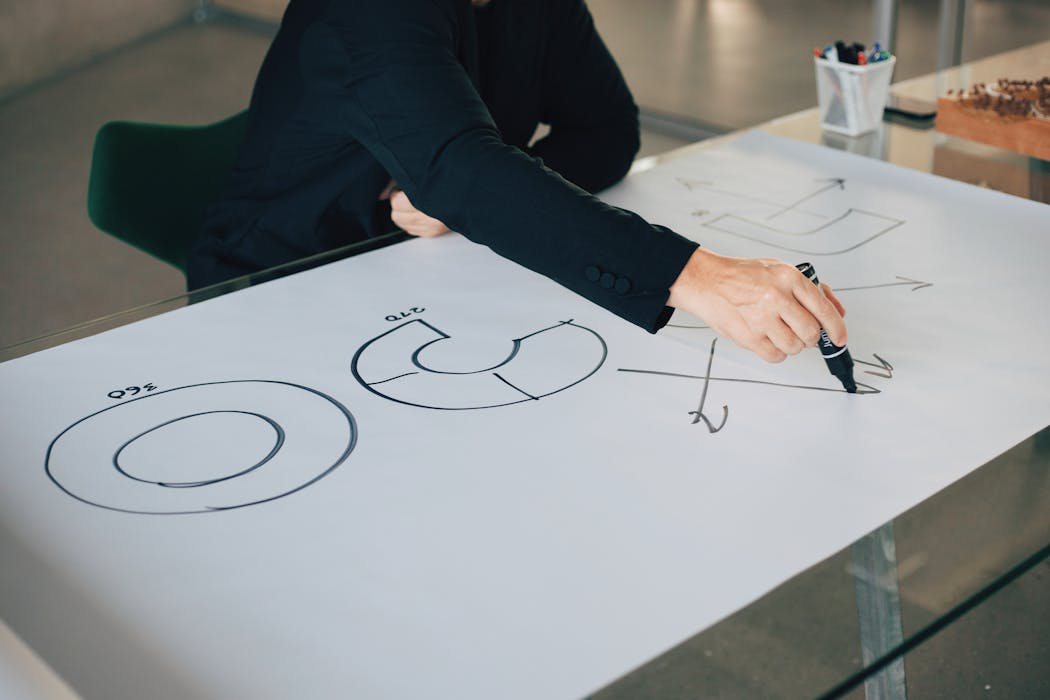
"Our design approach wasn't about imposing our ideas on the site; instead, it involved exploring, observing, and understanding the landscape. We envisioned how to best leverage this distinctive and remarkable terrain and fixed upon a design that mirrors the elegance of traditional Japanese architecture, with curves at 90°, 180°, 270°, and 360°." The core idea seamlessly integrates the surrounding landscape into the interior — echoing the design of a traditional Japanese single-story house that spreads horizontally with a restrained height — while the architectural design emphasizes simplicity, creating a unified and open space. For privacy without sacrificing the view, skylights strategically placed atop the properties introduce vertical views of the landscape. This design achieves a panoramic experience, horizontally or vertically, from any point within the building. Balancing openness and seclusion, the structure provides the pleasure of expansive panoramic views with a secluded and intimate atmosphere.
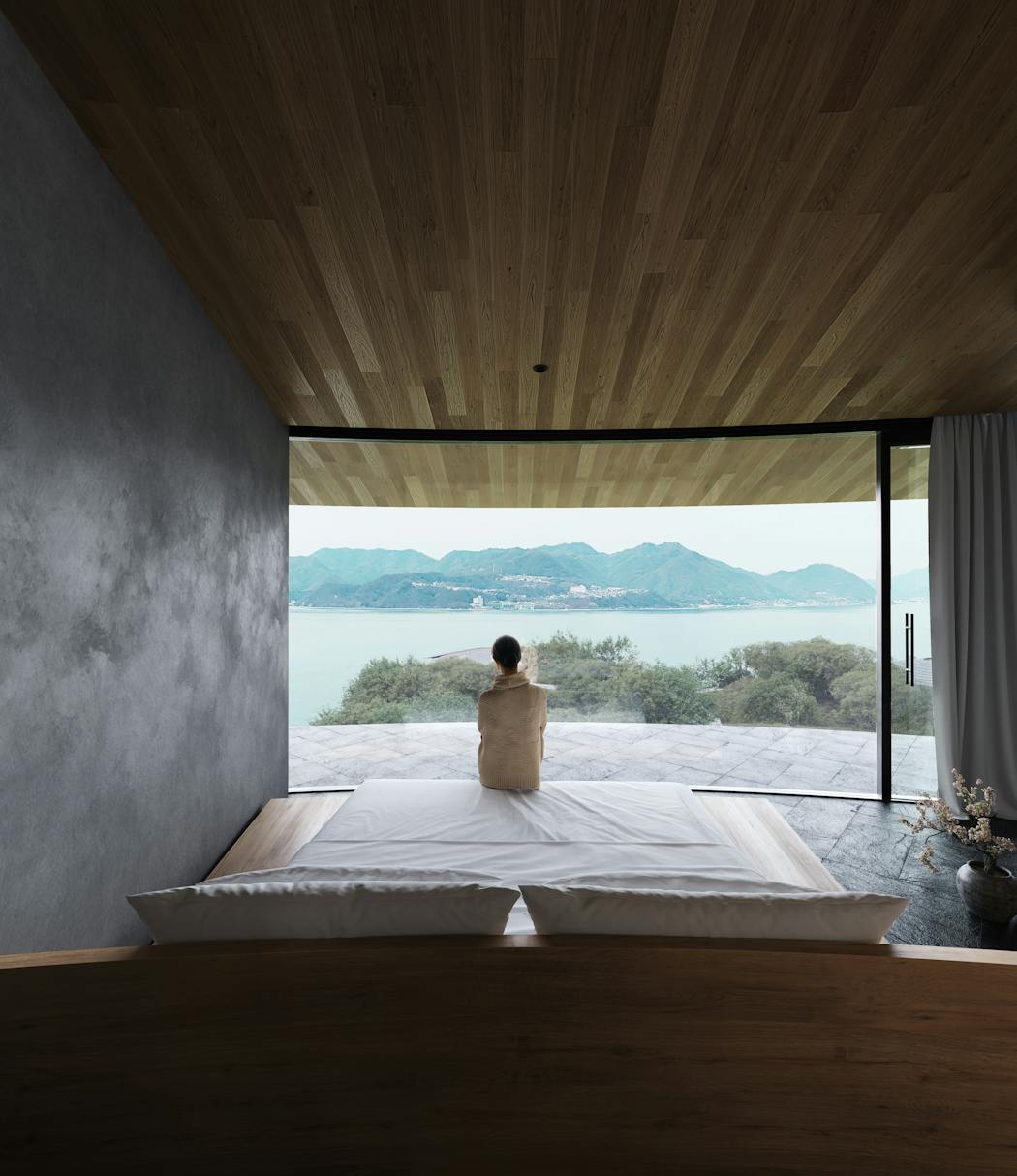
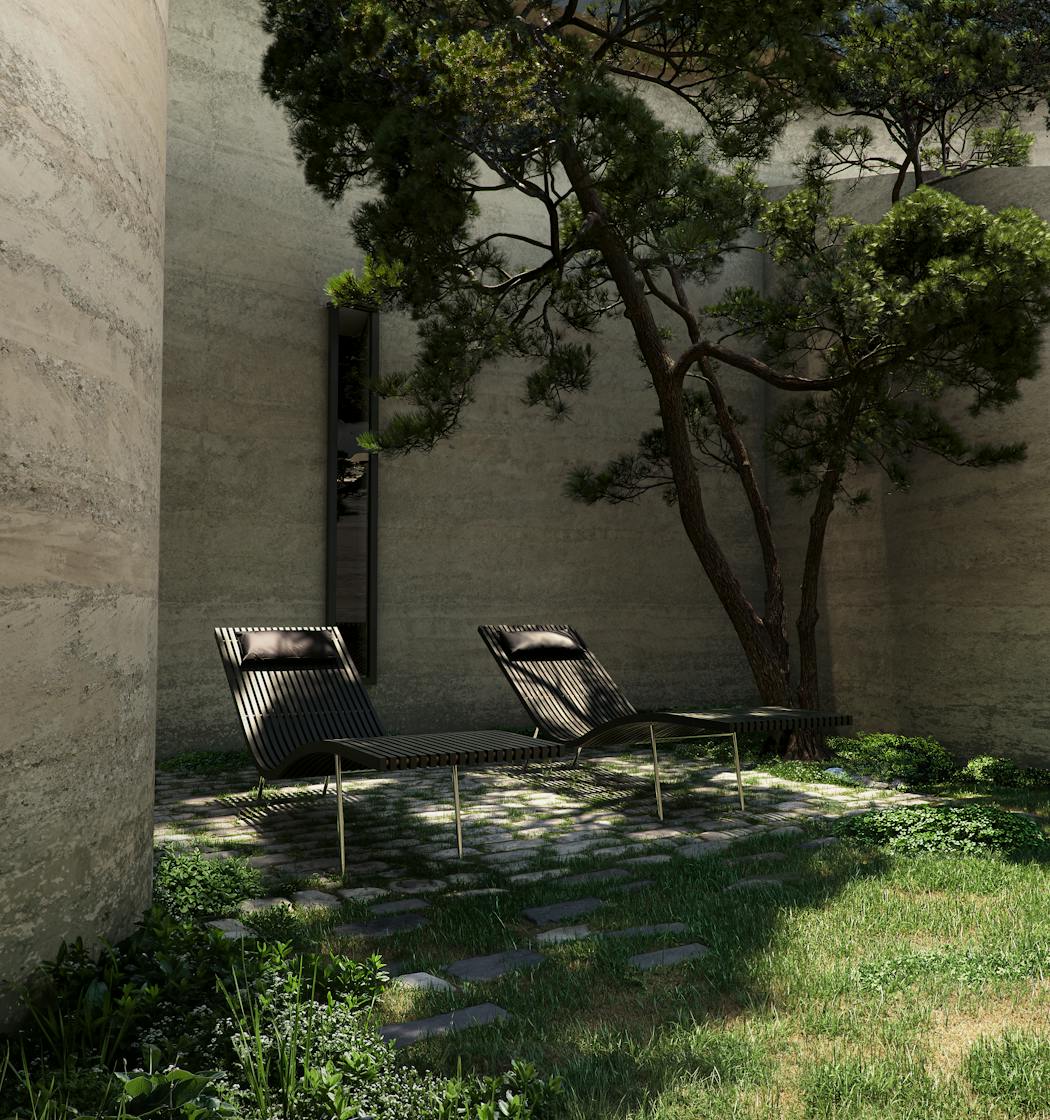
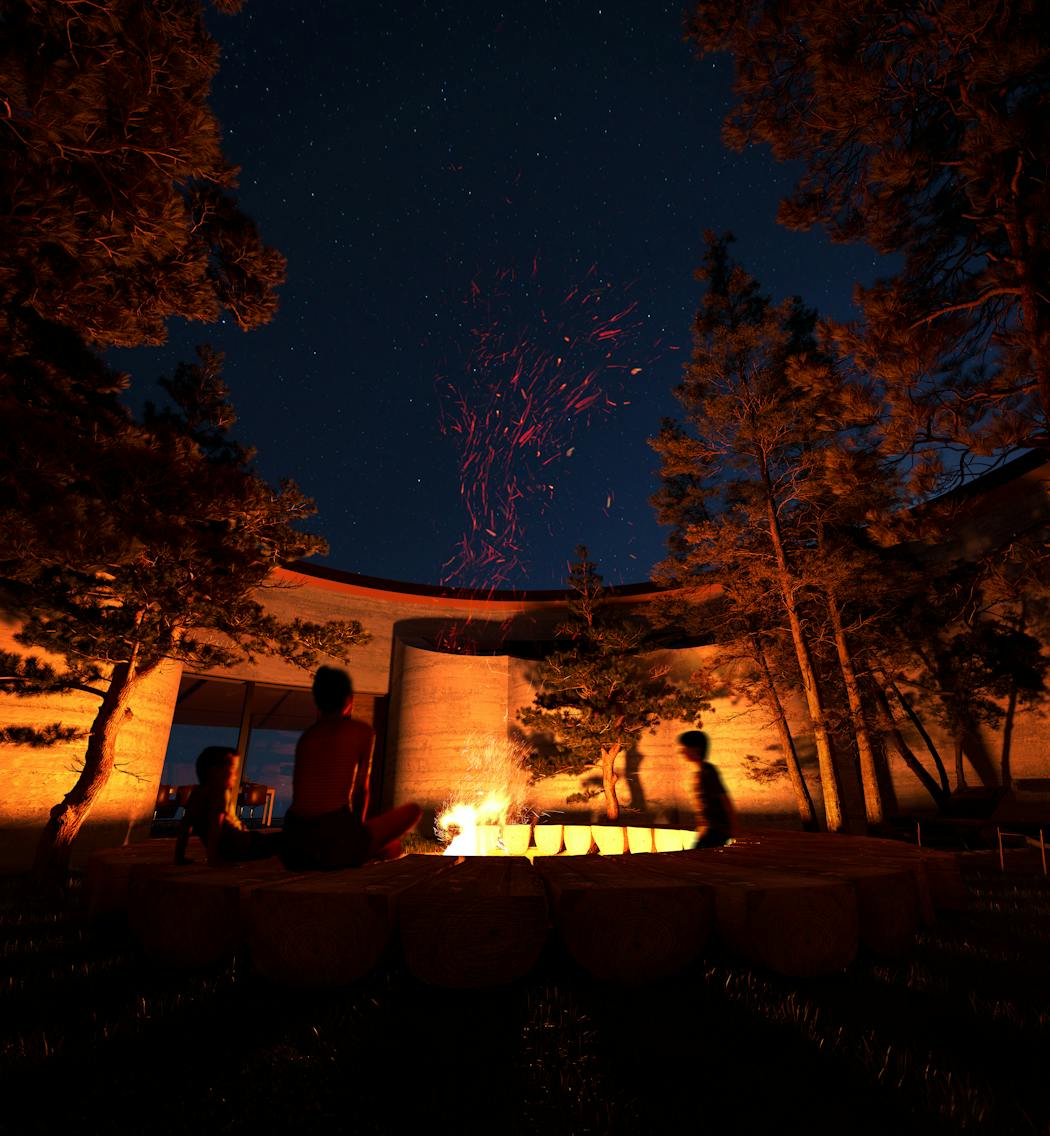
The "360" villa sits atop a small hill, providing a literal 360° view of the Setouchi land and seascape. In contrast, the central courtyard ensures complete privacy. Meanwhile, the "270" villa, capturing a 270° panorama of the surrounding archipelago, features an expansive pool that spans the entirety of the central courtyard. This broad area includes a cozy corner where family and friends can enjoy a sauna and gather around a fireplace. At the peninsula's tip, the "180" property aligns with the ridge-like steps and showcases a view that Bjarke eloquently describes as "an almost stylized perspective of the Japanese sea and mountains framed by a single large window." "90" is a shared, secluded relaxation space, offering perfectly framed views of the water and beach in a slightly more intimate corner, resembling a cove. Lastly, "0" symbolizes a pier, marking the start of the NOT A HOTEL SETOUCHI experience.
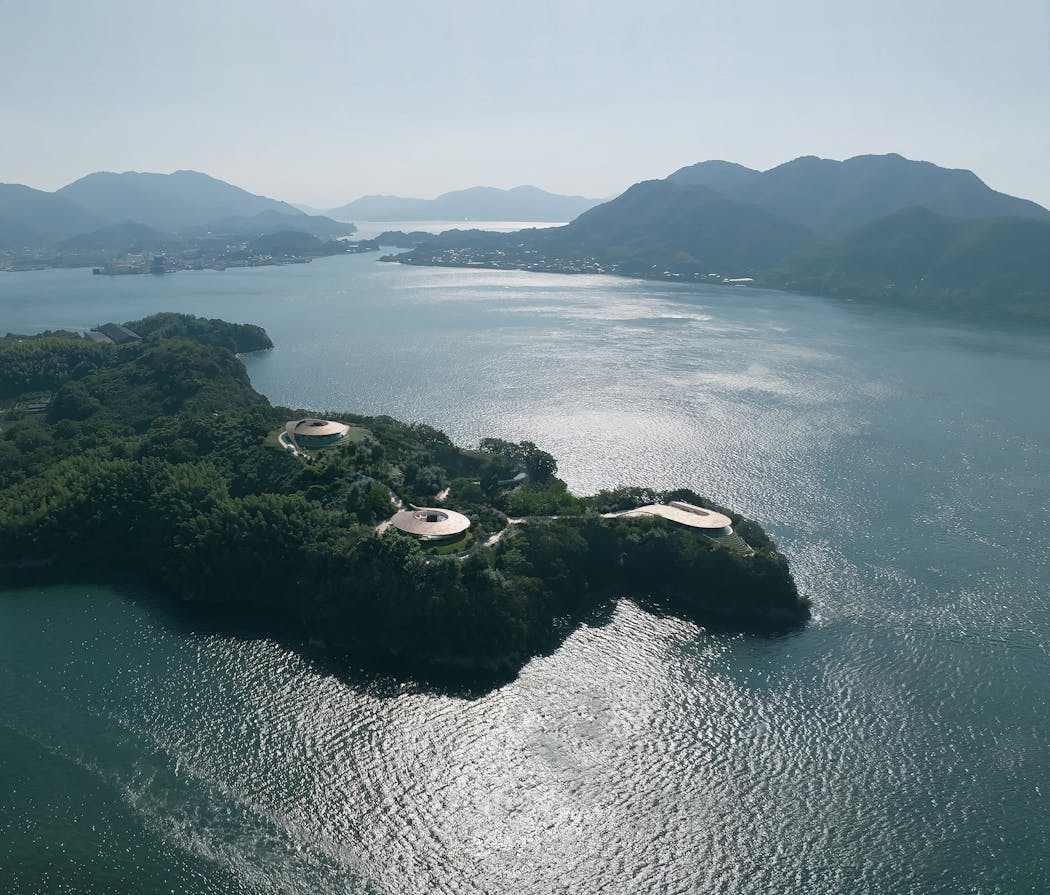
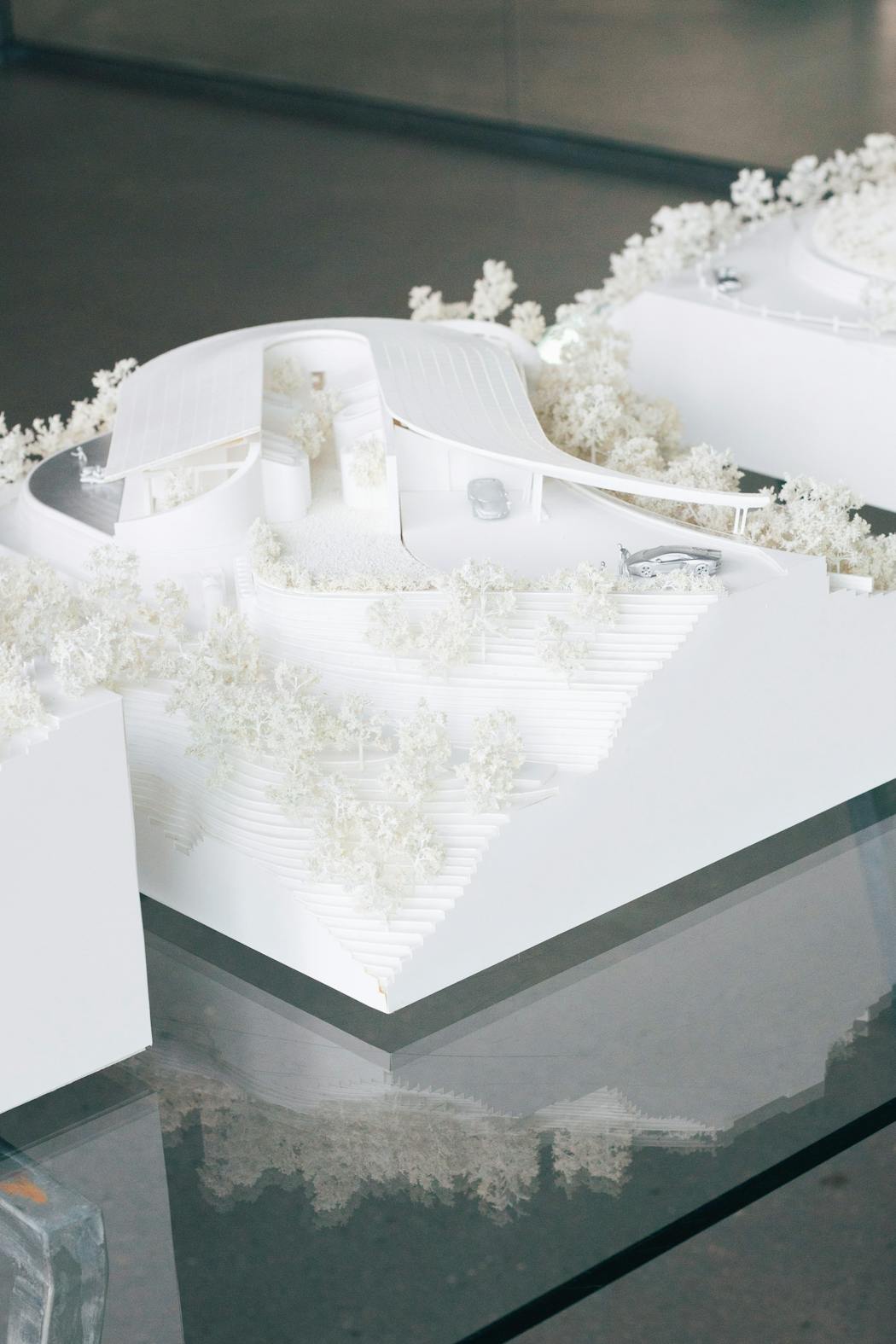
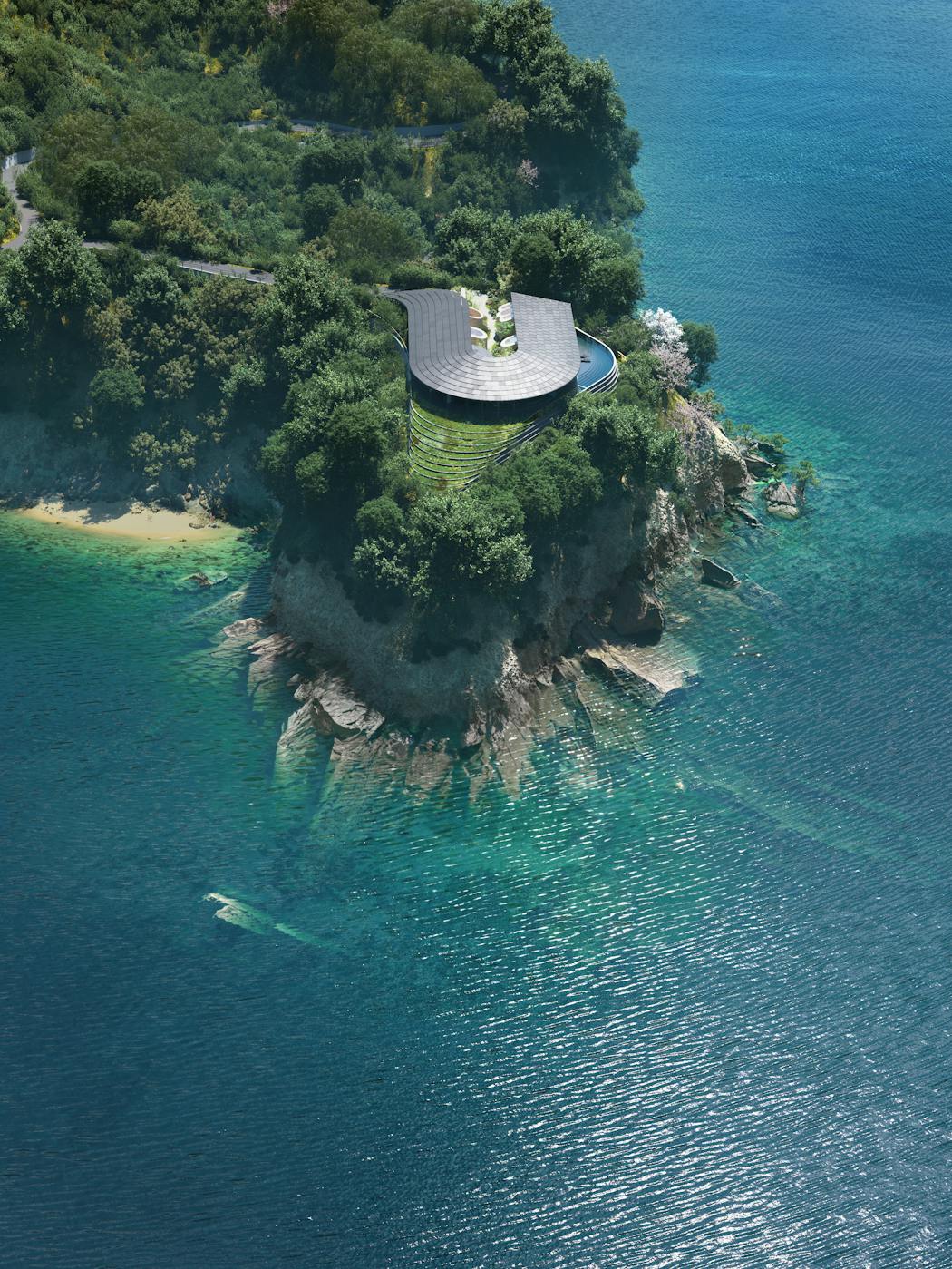
A Convergence of Japanese and Danish Sensibilities
"Japan is a captivating country where the rich traditions of hand-craftsmanship and a commitment to quality persist in everyday life. Architecturally speaking, the modern Danish aesthetic has been significantly shaped by Japanese traditional architecture, emphasizing structural honesty, simplicity, and material selection. That may be why I always feel like I am coming home when I visit Japan. If all goes as planned, this will be our first completed project in Japan. With the Danish desire for simplicity and the Japanese dedication to care and perfection, what we aim to achieve here will be a perfect illustration of the synergies that emerge when the sensibilities of both countries converge." Bjarke acknowledges the influence of Japanese architect Kenzo Tange as well as Danish architect Jørn Utzon, renowned for his work on the Sydney Opera House. "I have also been influenced by contemporary architects such as Tadao Ando, SANAA, and Sousuke Fujimoto, who was behind NOT A HOTEL ISHIGAKI," says Bjarke, before noting, "there are many exceptional contemporary architects in Japan, so being invited to express my architectural ideas in Japan is a great honor."
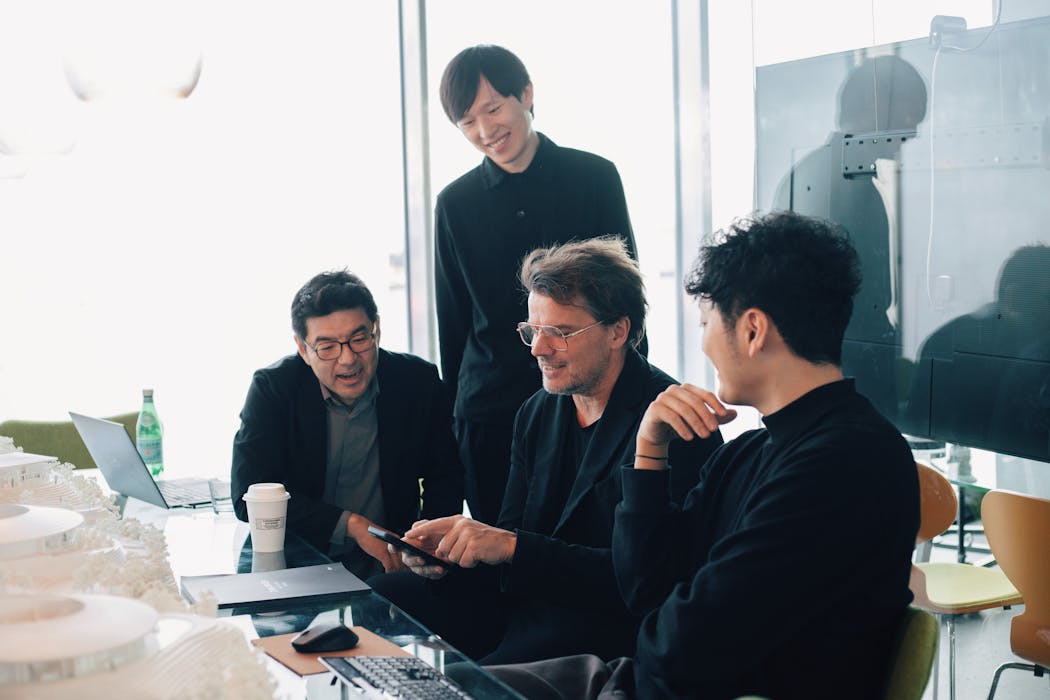
Walls of Sagishima Soil and a Solar-Powered Tile Roof
The fusion of Japanese tradition and cutting-edge technology is also a point of interest. The properties' earthen walls utilize a "rammed earth" construction technique, reinforced with structural elements. "The architecture has emerged from an interpretation of the natural topography, and the choice of building materials is deeply connected to the local environment. The rammed earth walls utilized in this project are crafted from the soil excavated on-site, essentially solidifying the essence of the landscape. The solar-powered tiled roof represents a technological reinterpretation of the traditional Japanese roof." Many furniture pieces featured in the properties are designed by Poul Kjærholm, a Danish designer who is a personal favorite of Bjarke; the architect himself owns Kjærholm pieces in his own home. "The abstract expression, the deliberate selection of materials, the emphasis on the structural connections; the combination of elements feels more aligned with architecture than product design. Poul Kjærholm's furniture is ideal for capturing a fusion of Denmark and Japan."
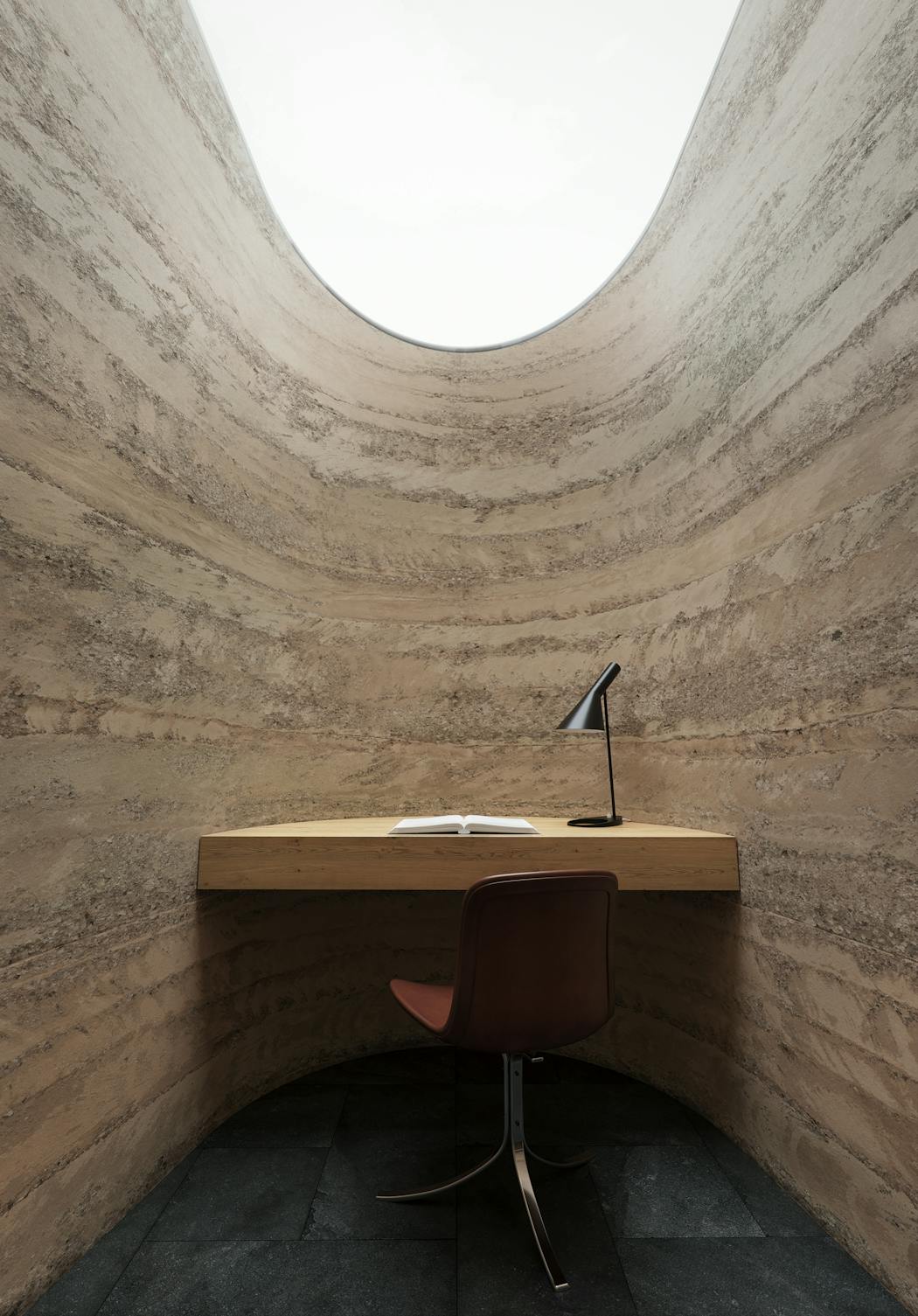
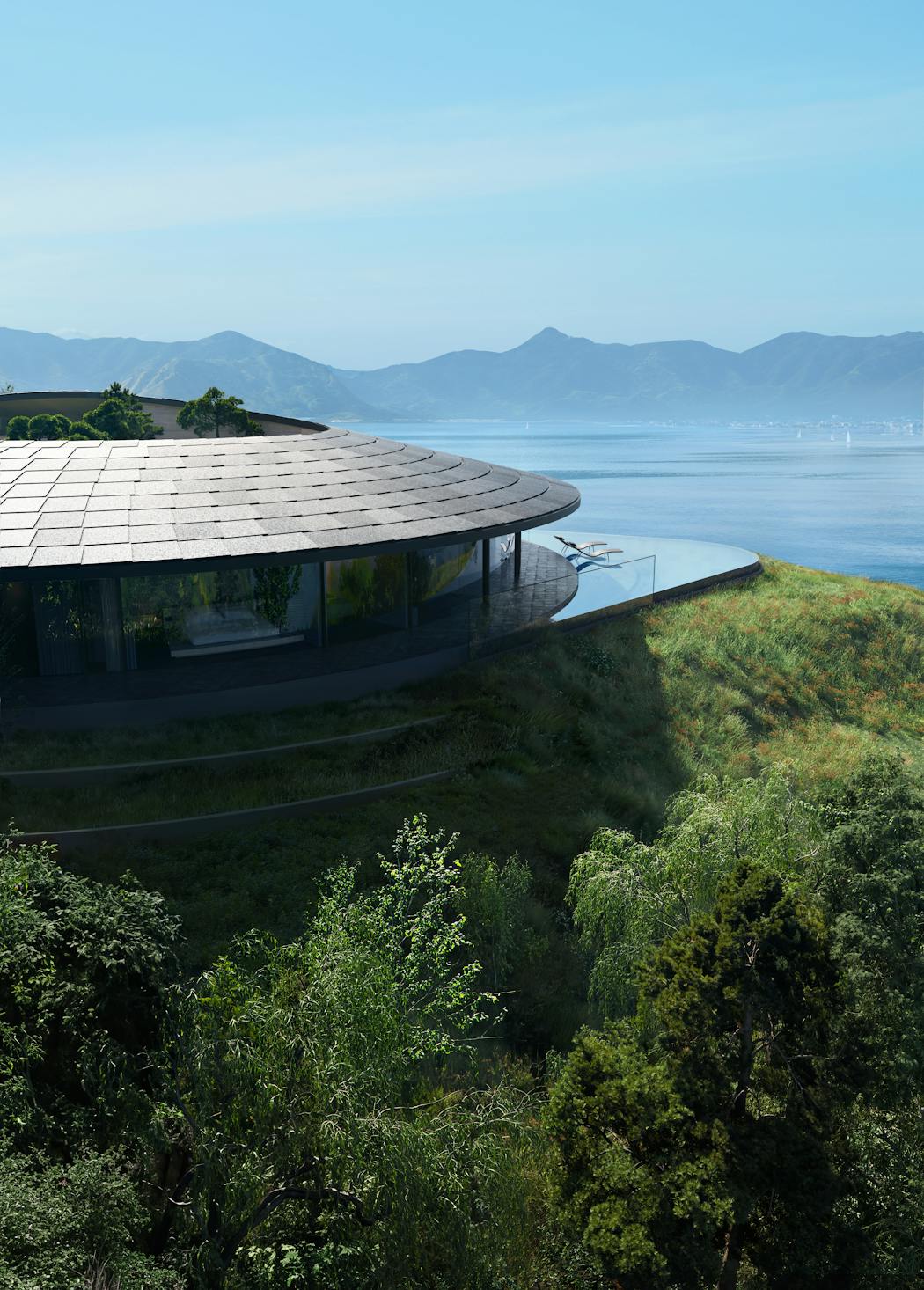
The Art of Globetrotting and Multi-Location Living
With projects spanning the globe, BIG has offices in Copenhagen, London, Barcelona, Oslo, New York, Los Angeles, and Shenzhen, and this element emphasizes Bjarke's fit with the NOT A HOTEL brand. He embodies the multi-location lifestyle that NAH advocates on a global scale. “Experiencing and delving into the diverse cultures and nature of various countries are essential for deepening understanding. As an architect, the opportunity to educate myself through such exploration is indispensable. I spend a significant amount of time in Copenhagen and New York, and it's important to feel at home wherever you go, avoiding the sense of living out of a suitcase. Each property in the NOT A HOTEL portfolio is a singular space, incorporating the local land, climate, and culture. However, at the same time, shared values flow through each property, such as an exciting sense of the unusual and a comforting feeling as if it were your own home.” NOT A HOTEL SETOUCHI marks BIG's inaugural project completion in Japan. The properties serve as an ideal base for exploring the Setouchi area, garnering international attention for its contemporary art scene and abundant natural surroundings. Whether opting for exploration or seeking a tranquil retreat, NOT A HOTEL SETOUCHI offers diverse experiences tailored to individual preferences.
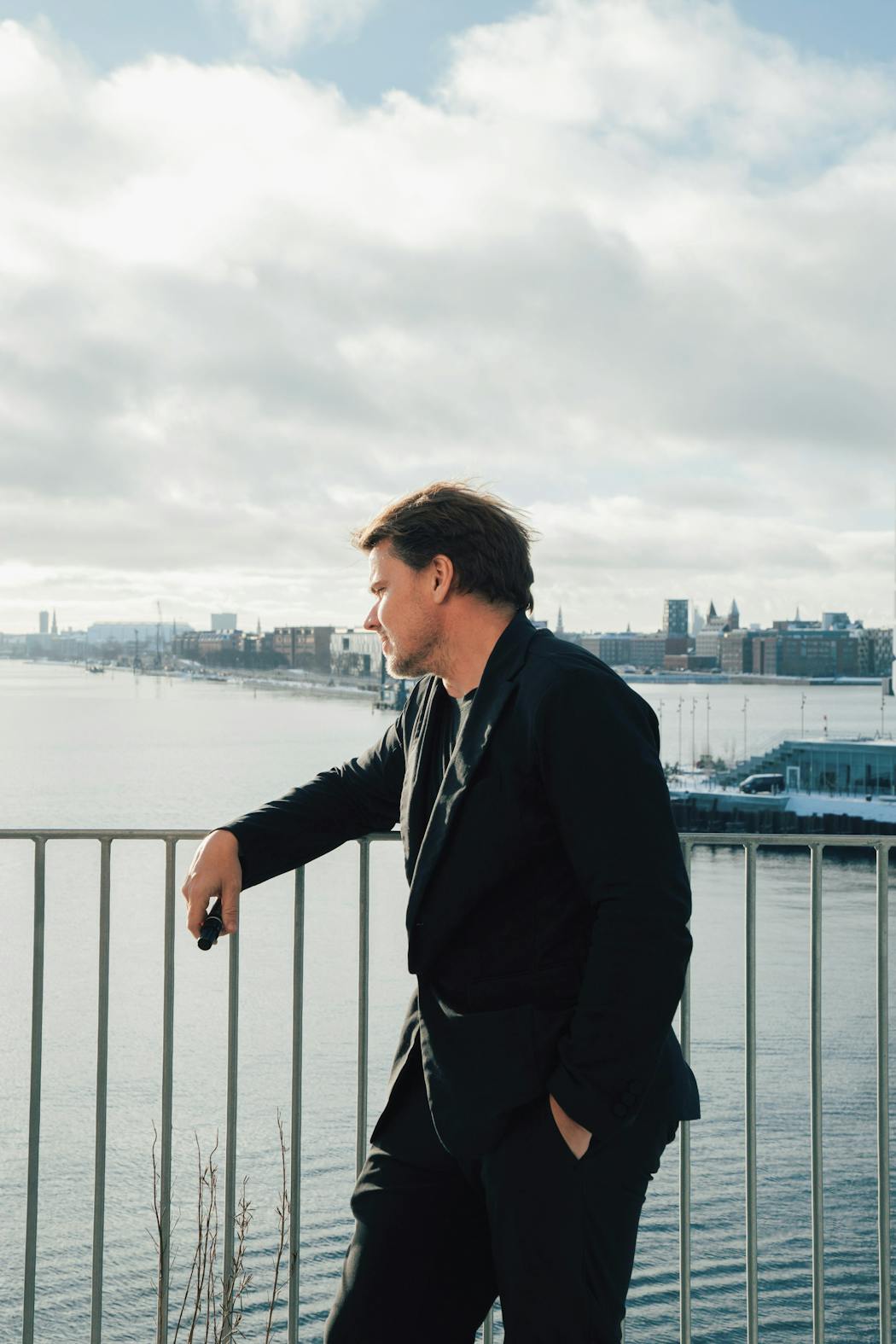

Bjarke Ingels
After working at OMA in Rotterdam, Netherlands, Bjarke co-founded PLOT Architects in 2001 before establishing BIG Bjarke Ingels Group in 2005. He has garnered global acclaim for creative design solutions that are conscious of cost and resources and showcase his "pragmatic utopian" concept. In 2016, he was included on the TIME 100 list, TIME magazine's annual publication featuring the 100 most influential people in the world.
WORKS
LEGO Brand House
The LEGO brand House in Billund (southern Denmark) is a colorful and playful space formed from a stack of 21 overlapping blocks, designed to resemble the famous LEGO bricks. This "experience center" features play zones and a gallery showcasing fan-created work and serves as an urban community space for local residents.
Noma 2.0
Noma is widely acknowledged as the "World's Best Restaurant" and pioneer of the New Nordic Cuisine movement. When the restaurant relocated to a historically significant old Danish Navy fortification site and reopened as Noma 2.0, BIG's design spread the restaurant's functions across 11 buildings, placing the chef’s at the center. The connecting glass corridors allow patrons to experience the desired views, light and atmosphere alongside their gastronomic journey.
Google Bay View Campus
In collaboration with Heatherwick Studios, BIG imagined the new Google headquarters in Silicon Valley as a first-of-its-kind workplace. Anchored in the three themes of innovation, nature, and community, the striking campus houses three buildings, each featuring a unique "dragonscale" roof equipped with 50,000 solar panels, to help deliver on Google's mission to operate on carbon-free energy by 2030.
Copenhill
CopenHill is "a new breed of waste-to-energy plant" located in an industrial area of Copenhagen. The building features a ski slope, hiking trail, climbing wall, environmental education center, and cafe, embodying BIG's notion of "hedonistic sustainability" while contributing to Copenhagen's goal of becoming the world's first carbon-neutral city.
STAFF
Text: Sanae Sato
Photo: Jeremy Kuhles

.png?w=700&auto=compress)
.png?w=700&auto=compress)
.png?w=700&auto=compress)